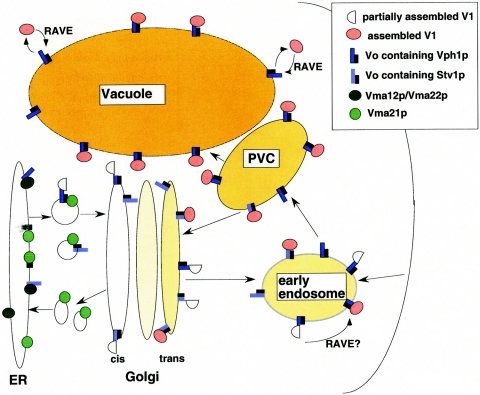FIG. 2.
Assembly and trafficking of the yeast V-ATPase. Possible steps in assembly and transport of Vph1p-containing and Stv1p-containing V-ATPases are shown here and described in more detail in the text. Shading of different organelles indicates the extent of acidification in that compartment; the vacuole is most intensely colored as the most acidic compartment in the yeast cell, and the first compartment in the secretory pathway showing any evidence of acidification in yeast is the Golgi apparatus. Vph1p-containing V-ATPases are known to travel to the vacuole via the prevacuolar compartment (PVC) (117) and are believed to reach the prevacuolar compartment via the early endosome, which is also likely to be somewhat acidic (134). Stv1p-containing V-ATPases appear to cycle between the prevacuolar compartment and the vacuole (68), and may travel through the early endosome as well. The RAVE complex is known to assist in reassembly of V1 and V0 complexes at the vacuole (131), and may also assist in assembly at the early endosome (134).

